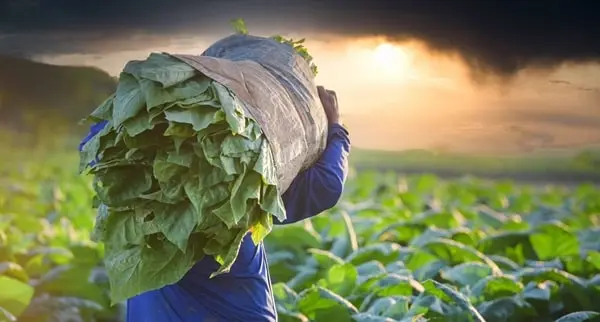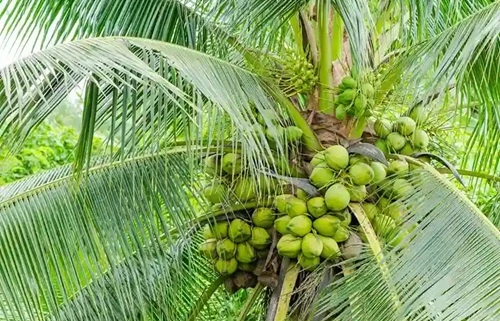With a strong and multi-dimensional flavor, the mustard plant has had a significant presence in Indian culinary practices for ages. Similarly, it is not only a kitchen classic but also one of the crucial ingredients on the agricultural surface of the State. India is rated one of the most powerful mustard-producing countries in the world, various states contribute significantly to its production. Below, we have discussed the top five most mustard-producing states in India and looked into what factors led to their success in circulating mustard seeds.

1. Rajasthan
With its dry environments and numerous agricultural sectors, Rajasthan has the largest mustard production amongst the Indian states. Efficient growing conditions (proving season and fertile soil) help achieve this high mustard production. Mustard has emerged as a distinct and prominent crop in Kota, Bharatpur, and Alwar. The government of Rajasthan supports the farmers with systemized farming options, which eventually increases mustard production in the State.
2. Madhya Pradesh
This area is mainly known for the title of Madhya Pradesh, the “Heart of India”; obviously, the mustard collection in this sphere is another important aspect of the game. Many states in India have different agro-climatic zones, including tropical to subtropical zones and others. Indian farmers thus benefited from these wide varieties of climate patterns. Districts like Morena, Gwalior, and Shivpuri are the dominant mustard-producing districts in Madhya Pradesh and together produce up to 31 % of the State’s peas output. Also, the increasing adoption of new agricultural techniques and the availability of irrigation systems help increase the total mustard production.
3. Uttar Pradesh
Due to the State’s flat, fertile plains and fertile alluvial hotlands, Uttar Pradesh occupies a significant place in mustard production. The employment of fertile Ganges topography facilitates the cultivation of the land to enhance the productivity of mustard, an important cash crop of the State. These areas like Etawah, Mainpuri, or Farrukhabad not only have mustard but also from Uttar Pradesh. Particularly, the acts of the state government toward increasing the production of oilseeds are the major contributor to the spectrum of growth in the field of mustard farming in Uttar Pradesh.
4. Haryana
With its current high agricultural productivity, Haryana, known as a mustard creator, has become the leading region of mustard production in India. Alluvial soil-rich State and its climates have proved suitable for mustard cultivation. Haryana’s farmers can increase the production of mustard through various modern types of farming and agricultural machinery. Furthermore, such programs and support for farmers help them widen their mustard cultivations in the State.
5. Karnataka
Initially, the State was known for its horticulture and coffee, but Karnataka has the State’s highest share of mustard plantations. Contrary to the popular impression in Karnataka’s central and southern districts, the Belagavi, Dharwad, and Bidar districts of Northern Karnataka see significant mustard production. The State has two prominent features: agro-climatic diversity and irrigation facilities that favor mustard farming. In Karnataka, more and more farmers are starting to use the cultivation method of rotational cropping, which includes mustard as a rotation crop and, thus, contributes to a further increase in mustard yield.
Conclusion:
Indian mustard season is a fine instance of an Indian country’s agricultural and farmer’s bravery. The Indian mustard production is mainly concentrated in the top five states—Rajasthan, Madhya Pradesh, Uttar Pradesh, Haryana, and Karnataka—that truly lead the growth of this robust industry. Thanks to the optimal agro-climate, innovations in agriculture, and the influence of the authorities, these major states still supply the entire country’s mustard, along with boosting the national agriculture industry.
FAQs:
Q1. How does the yield problem occur in the list of most critical problems of Mustard Growing in these states?
Ans: Mustard growers need help with price fluctuation markets, pest outbreaks, and water scarcity. Another aspect is climate’s effect on mustard cultivation via changes in rainfall patterns and extreme heat.
Q2. What does the export of mustard add to India’s economy?
Ans: One of the major benefits for farmers in growing mustard is that farmers’ income increases, workers are hired, and the country’s oil production grows. Additionally, mustard oil exports reinforce economic growth by providing the country with foreign exchange, enabling it to buy many goods and services.
Q3. Has the government done anything to make the mustard farmers’ lives easier?
Ans: Certainly, the Indian government employed by the NFSM for Oilseeds and the PMKSY are the schemes that assist in establishing mustard farmers. The purpose of these interventions is to intervene in agricultural productivity and irrigation and to subsidize farmers financially.
Q4. How does this local ingredient obtain identity among spices of Indian cuisine?
Ans: Mustard is used everywhere in Indian dishes to add flavor and depth, such as curries, pickles, snacks, etc. Its assertive flavor and nutritional implications make it an essential addition to our pantry, from traditional to contemporary cooking.
Related Topics
- Top 5 Spice Producing States in India
- Top 5 Turmeric Producing States In India
- Top 5 Ginger Producing States In India
- Top 5 Chilli Producing States in India
- Top 5 Cardamom Producing States In India

